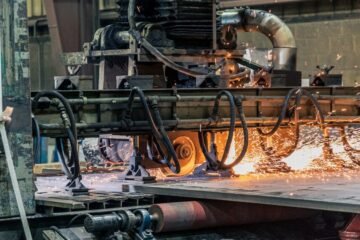In commercial kitchens, precision is key. Whether you’re baking bread, roasting meats, or crafting delicate pastries, the temperature accuracy of your commercial oven can make or break your dishes. That’s where regular calibration comes into play. Calibration ensures your oven is performing at the correct temperature, which is crucial not only for the quality of your food but also for safety and efficiency in your kitchen.
Why is Calibration Important?
- Consistent Quality: Accurate temperatures mean your dishes cook evenly every time. An oven that’s too hot or too cold can result in undercooked or overcooked food, leading to inconsistent quality that can disappoint customers.
- Safety: Undercooked food can harbor harmful bacteria, putting your customers at risk. Regular calibration ensures that your oven reaches and maintains the temperatures necessary to cook food safely.
- Energy Efficiency: An oven that’s out of calibration can consume more energy than necessary, driving up utility costs. Keeping your oven properly calibrated ensures it operates efficiently, saving your business money in the long run.
- Prolonging Equipment Life: Regular calibration reduces wear and tear on your oven’s components by preventing it from working harder than needed to reach the desired temperature. This can extend the life of your equipment, reducing repair and replacement costs. For commercial oven and stove repair in Atlanta, regular calibration is a simple step to avoid more complex and costly repairs down the line.
How to Calibrate Your Commercial Oven
Calibration might sound complicated, but with the right approach, it’s a straightforward process that can be done without a professional technician. Here’s a simple guide to calibrating different types of commercial ovens:
Step 1: Gather Your Tools
- Oven thermometer: A reliable oven thermometer is crucial for checking the actual temperature inside your oven.
- User manual: Different ovens have different calibration procedures, so having the manual handy can guide you through specific steps for your model.
Step 2: Preheat the Oven
- Set your oven to 350°F (or 180°C) and let it preheat fully. This usually takes about 20 minutes but can vary depending on your oven type and size.
Step 3: Check the Temperature
- Place the oven thermometer in the center of the oven, as this spot tends to be the most accurate for gauging overall temperature.
- After the oven has preheated, check the thermometer. Note down the reading after a few minutes. If it matches the set temperature, your oven is correctly calibrated. If not, proceed to adjust it.
Step 4: Adjust the Temperature (Manual Ovens)
- For manual or analog ovens, you’ll need to adjust the oven’s thermostat dial. Most dials can be pulled off to reveal a small calibration screw.
- Using a screwdriver, turn the calibration screw slightly in the appropriate direction:
- If the oven is too hot, turn the screw counterclockwise.
- If the oven is too cool, turn the screw clockwise.
- Make small adjustments, recheck the temperature, and repeat as necessary.
Step 5: Adjust the Temperature (Digital Ovens)
- For digital ovens, calibration is usually done through the oven’s control panel. Refer to the user manual for specific instructions, as these steps can vary widely between models.
- Typically, you’ll access a calibration mode by pressing certain buttons (often a combination of the “bake” and “up/down” arrow keys).
- Adjust the temperature setting up or down based on your thermometer reading.
Step 6: Recheck and Repeat
- After making adjustments, allow the oven to preheat again and recheck the temperature with your oven thermometer.
- Continue to fine-tune the settings until the thermometer consistently matches the desired temperature.
Step 7: Regular Calibration Checks
- To maintain accuracy, it’s recommended to check your oven’s calibration every few months or whenever you notice food cooking unevenly.
Final Thoughts
Regular calibration of your commercial oven is an easy but essential task that can vastly improve your kitchen’s efficiency, food quality, and safety standards. By making this a routine part of your kitchen maintenance, you can avoid costly mistakes, keep your customers happy, and ensure that your oven serves your business well for years to come.
See Also: How Shapewear Can Boost Confidence and Enhance Your Wardrobe
FAQs
1. Why do I need to calibrate my commercial oven regularly?
Regular calibration keeps your oven at the right temperature, which helps cook food evenly, keeps it safe to eat, and saves energy. It also helps your oven last longer by reducing extra wear and tear.
2. How often should I calibrate my commercial oven?
You should check your oven’s calibration every few months or when you notice it’s not cooking food consistently. Regular checks help keep your oven reliable and working well.
3. Can I calibrate my commercial oven myself, or do I need a professional?
You can usually calibrate your oven yourself with a good oven thermometer and by following the steps in your oven’s manual. However, if you prefer help or the job seems too tricky, professional services for commercial oven and stove repair in Atlanta can handle the calibration for you.



